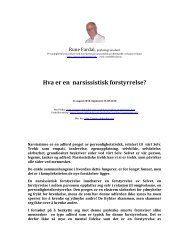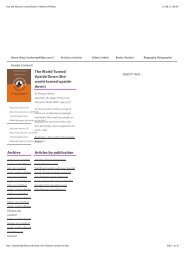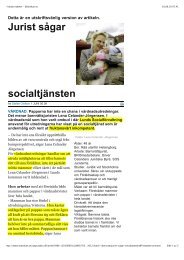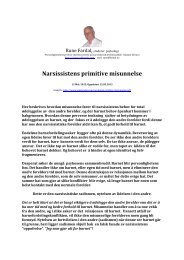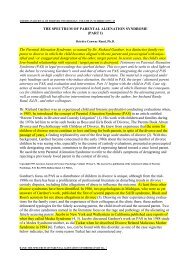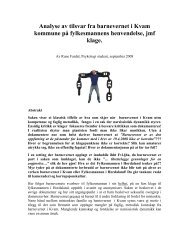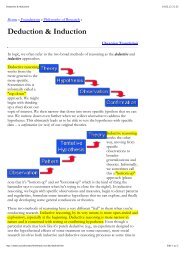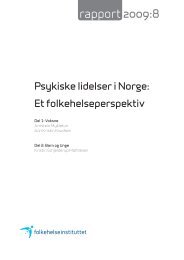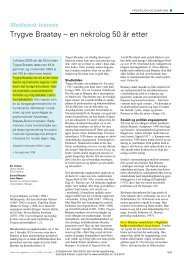The origins of narcissism and narcissistic personality disorder a
The origins of narcissism and narcissistic personality disorder a
The origins of narcissism and narcissistic personality disorder a
You also want an ePaper? Increase the reach of your titles
YUMPU automatically turns print PDFs into web optimized ePapers that Google loves.
THE ORIGINS OF NARCISSISM 91<br />
infants are born into an objectless state-that is, without interest in<br />
objects or knowledge <strong>of</strong> them-<strong>and</strong> only come to discover other persons<br />
through frustration <strong>and</strong> hatred. This theory is consistent with the economic<br />
assumptions <strong>of</strong> his thought-specifically, a limited quantity <strong>of</strong><br />
libido <strong>and</strong> a drive to eliminate tension-but Freud had many reservations<br />
about this account <strong>of</strong> early development.<br />
According to his earlier theory, which Freud never fully ab<strong>and</strong>oned,<br />
<strong>narcissism</strong> is a developmental stage between autoerotism <strong>and</strong> object<br />
love. It begins when an infant first becomes capable <strong>of</strong> forming an ego<br />
or, in modern terms, a self-representation. Infants then shift from autoerotic<br />
gratification to a libidinal investment in the early self-image.<br />
Self-inflation is therefore fundamental to the ego. Freud also held that<br />
the autoerotic stage is preceded by a period in which infants seek<br />
objects (i.e., the breast) out <strong>of</strong> the self-preservative drive. But although,<br />
in this early theory, the neonate has complex interactions with the<br />
object world, Freud’s economic assumptions drove him increasingly to<br />
describe babies as monads.<br />
Freud’s confusions about early development have since given way<br />
to a surprising unanimity <strong>of</strong> psychoanalytic opinion. Both classical <strong>and</strong><br />
object-relations theorists, despite bitter theoretical battles over the<br />
question <strong>of</strong> primary indifference to objects versus primary attachment,<br />
describe the infant as fused with or undifferentiated from mother. Narcissism<br />
is thus conceptualized as a tensionless state, a continuation <strong>of</strong><br />
prenatal existence.<br />
Current empirical research increasingly disputes this characterization<br />
<strong>of</strong> the first year <strong>of</strong> life. Recent findings suggest that differentiation<br />
between self <strong>and</strong> object begins at birth, if not before. Because this<br />
research also portrays newborns as active, stimulation-seeking organisms<br />
who establish with their caregivers a system <strong>of</strong> mutual affective<br />
regulation, traditional accounts <strong>of</strong> a tensionless, <strong>narcissistic</strong> stage are<br />
<strong>of</strong> dubious validity.<br />
Although the concept <strong>of</strong> primary <strong>narcissism</strong> is problematic, Freud’s<br />
first theory <strong>of</strong> <strong>narcissism</strong>-that <strong>narcissism</strong> begins with the formation<br />
<strong>of</strong> the self-representation-is far more in accord with the findings <strong>of</strong><br />
social <strong>and</strong> developmental psychology, as are several psychoanalytic<br />
concepts used to describe the second year <strong>of</strong> life (e.g., rapprochement,<br />
the mirror stage, <strong>and</strong> transitional object usage). Because research in<br />
social cognition confirms Freud’s insight that normal self-esteem is<br />
<strong>narcissistic</strong> (i.e., self-enhancing), this chapter proposes a theory <strong>of</strong> nor-




